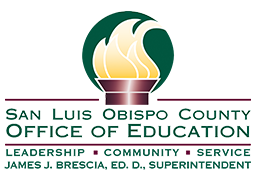Information Literacy Requires Focus
Focus.
So much is competing for our attention in contemporary culture that the ability to focus, evaluate and analyze the information in front of us has become more important than ever. And our students are no exception.
According to a 2018 Pew Research Center study, 45% of U.S. teens say they are online “almost constantly.” Compare that figure to the 24% reported by the study just 3 years earlier and it’s clear that more and more of our students are looking to computers and cellphones as their first – and sometimes only – source of information. So how do we help them consider this information through a critical lens so they can focus on what’s most important?
Information Literacy – which encompasses Media Literacy, Digital Literacy and Digital Citizenship – attempts to do just that. To better understand Information Literacy and the role it can play, we first need to define our terms:
 Media Literacy: the ability to understand and analyze information in media formats, including magazines, newspapers, television, movies, games, music, etc.
Media Literacy: the ability to understand and analyze information in media formats, including magazines, newspapers, television, movies, games, music, etc.
Digital Literacy: the ability to use digital technology to access, evaluate, and create information.
Digital Citizenship: how one is supposed to conduct oneself in the digital environment.
According to a 2018 K-12 Digital Learning survey from Project Tomorrow, 77% of 6–8 grade students and 90% of 9–12 grade students say that they regularly look up videos online to learn new things when they are at home. But far fewer students – only 42% – say they know how to detect bias online, and only 38% say they know how to evaluate the accuracy of sources.
So our students are online almost constantly and are turning to videos and other sources on the internet to learn new concepts, but they do not know how to evaluate that information – either for use in their own lives or when creating content and sharing it with others. How, then, can the three pillars of Media Literacy, Digital Literacy and Digital Citizenship help students develop what the National Association of Media Literacy Education refers to as “the habits of inquiry and skills of expression that they need to be critical thinkers, effective communicators and active citizens in today’s world”?
By developing and practicing the five competencies of Information Literacy:
- Access Skills – the ability to practice active listening and reading comprehension, as well as to implement effective search-and-find strategies
- Analysis Skills – the ability to identify authorship, as well as the purpose, point of view and credibility of the message
- Creation/Collaboration Skills – the ability to generate ideas, to collaborate to create messages using a diverse array of language, images and sound, and to use feedback to edit and revise
- Reflection Skills – the ability to consider the potential risks and harms of media messages, and to understand how differences in values and life experience shape people’s media use and their message interpretation
- Action Skills – the ability to apply ethical judgment and social responsibility to online communication situations and understand how concepts of ‘private’ and ‘public’ are reshaped by digital media, as well as to respect legal rights and responsibilities (copyright, intellectual freedom, fair use, attribution, etc.)
The California Department of Education has developed a Media and Information Literacy Toolkit, which provides additional resources and support for helping students be media and information literate.
Michael Garrett
Educational Technology Coordinator
San Luis Obispo County Office of Education
mgarrett@slocoe.org
805.782.7290
Contact
- San Luis Obispo County Office of Education
- Office of James J. Brescia, Ed.D.
- 3350 Education Drive
- San Luis Obispo, CA 93405
- Tel: 805-543-7732
- Contact SLOCOE
- Contact Webmaster

